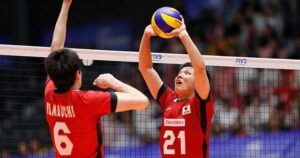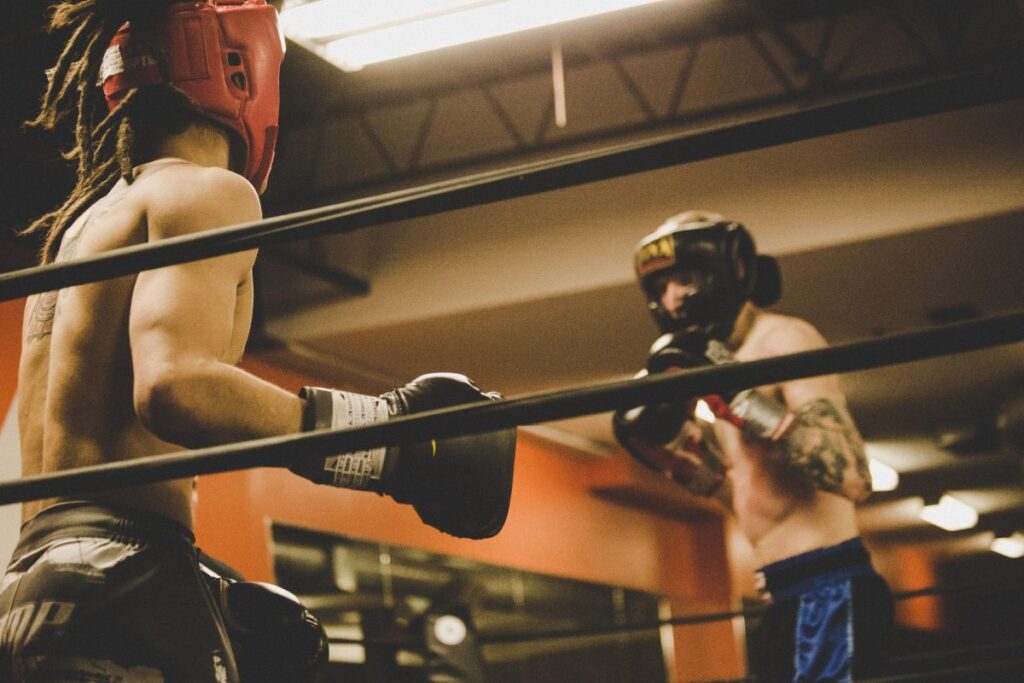
For beginners in volleyball, when spiking (attacking)
You will find it difficult to jump and time the toss listed above.
To time the toss and spike accurately, you need to perfectly predict where and how fast the ball will fall.
With fluffy balls such as soft volleyball and balloon volleyball, it is even more difficult to match the timing because the ball swings…
This time, we will introduce tips to match the timing to the ball tossed when spiking volleyball (hardball), and
I would like to introduce you to some effective exercises to get your timing right.

目次
What people who can’t time their volleyball spikes think
Approaches to improve spike timing
In volleyball, spikes are one of the important elements that determine the game.
However, many players struggle with timing their spikes. If the timing is not right, it will be difficult to hit a powerful spike, and the effectiveness of the attack will be significantly reduced.
Therefore, below we will introduce methods to improve the timing of spikes.
1. Master the basics of the approach
The first step to improving your spike timing is to make sure you master the basics of your approach.
Approach refers to the way you run or step before jumping, and if you are not good at this, it will be difficult to contact the ball at the optimal point of impact.
Practice keeping the number of steps, rhythm, and speed of your approach consistent.
2. Strengthen communication with setters
The timing of the spike is highly dependent on the quality of the toss from the setter.
It is important to work with your setter to discuss and adjust the height, speed, and direction of the toss that suits you.
Also, knowing the timing and planned location of the toss in advance will make it easier to adjust your approach accordingly.
3. Improve visual focus
You can improve your timing by keeping your eyes tightly focused on the ball.
Follow the ball from the moment it leaves the setter’s hand and try to accurately predict its trajectory.
It is important to always be aware of the speed and height of the ball, as well as your position.
4. Practice your timing.
In order to improve the timing of your approach, it is essential that you actually get a lot of practice.
It is important to repeatedly practice adjusting the speed of your approach according to the height and speed of the toss, and find the optimal timing for yourself.
Also, practice imagining various situations so that you can respond to different types of tosses.
5. Strengthen your physical training
Improving spike timing requires strong jumping power and quick reaction time.
By doing plyometric and strength training to increase your lower body strength, you can jump higher and faster.
This improves reaction time to tosses and improves timing.
conclusion
To improve spike timing, it’s important to start with basic technique and focus on aspects of collaboration with the setter, visual focus, practice, and physical training.
By being aware of these points and practicing repeatedly, you will be able to make powerful and accurate spikes.
Improving your timing will not happen overnight, but with continued effort and practice, you will steadily improve your skills.

Effective home practice for timing spikes
Timing your spikes is an important skill in volleyball.
But even if you can’t go to the court or gym, you can still improve this skill through exercises you can do at home.
Here are some effective home exercises to improve your spike timing.
1. Approach footwork practice
- Give yourself space : Make sure you have enough space in your home to move around safely.
- Repeat basic steps : Repeat the basic steps of your approach (“right-left-right” or “left-right-left”). This will help develop a sense of rhythm in your approach and improve your sense of timing.
2. Jump training
- Plyometrics : Improve your jumping power and reaction speed with plyometric training such as jump squats and box jumps.
- Reach-up jumps : Practice reaching and reaching as high as possible by jumping from the last step of your approach. This will help improve your jump timing and height.
3. Visual training
- Video Analysis : Watch spike videos of professional and advanced players and analyze their approaches, jumps, and timing of hits.
- Visualization training : Close your eyes and imagine yourself making the perfect approach, jumping and spiking at the right time. This exercise will help you internalize a sense of correct timing.
4. Strengthen your core and lower body
- Core Training : Planks and crunches strengthen your core and improve your body stability.
- Lower body training : Squats and lunges strengthen your lower body and improve your jumping ability.
5. Repeat timing practice
- Practice hitting the ball against a wall : Practice hitting the ball lightly against a wall in a safe space. Adjust your approach, jump, and timing by hitting the wall.
conclusion
Timing your spikes requires proper footwork, strong jumping power, and good body conditioning.
By controlling your body properly through these exercises you can do at home, you can significantly improve your spike timing on the court.
The key is to practice consistently and develop a sense of proper form and timing.

Tips for beginners to be able to hit spikes (attacks)
In order for beginners to be able to attack (spike) right away, it is important to learn basic skills step by step and practice repeatedly.
Here, we will briefly explain how beginners can attack, from the basics to advanced techniques.
1. Understand basic forms
- Approach practice : For the spike approach (running style), remember the rhythm of “right-left-right + jump” or “left-right-left + jump” (depending on your handedness). Start from a low position, gradually increase speed, and then jump powerfully on the last step.
- The correct way to jump : Bend your knees firmly, apply pressure from below, and jump while swinging your arms up. This allows you to jump higher.
2. How to hit the ball
- Arm swing : Swing your arm from above as if you were hitting the ball hard. It’s important to also utilize your wrist snap to give speed and rotation to the ball.
- Understanding your hitting point : The ideal hitting point is the highest point of your jump, with the ball slightly in front of you. Be conscious of hitting the ball at this point.
3. How to practice
- Toss practice : A consistent toss is essential for successful spikes. Raise the toss by yourself and repeat the approach and jump according to the toss.
- Practice hitting the ball against a wall : By practicing hitting the ball lightly against a wall, you can improve the timing of your approach and the way you hit the ball.
4. Communication and positioning
- Communication with teammates : It is important to deepen cooperation with the setter, communicate what kind of toss you prefer, and understand each other.
- Proper positioning : Take proper position in front of the net to ensure space for your approach.
5. Mental preparation
- Positive attitude : Not being afraid of failure and actively trying to attack leads to growth. Learn from your mistakes and use them next time.
- Practice in games and practice : By actively challenging attacks not only in practice but also in actual games, you will accumulate experience and improve your skills.
Spikes are one of the most exciting techniques in volleyball.
Even beginners will be able to hit effective attacks by practicing steadily from the basics.
Above all, practicing while having fun is the shortcut to improvement.
People who want to be able to make perfect volleyball spikes
Dodge the blocks of the volleyball spikes (attacks) and smash! Check out the tips for deciding



![A thorough explanation of the rules of beach volleyball! How is it different from indoor volleyball? [From beginner to advanced]](https://planotatico.com/wp-content/uploads/2024/03/img_f30fa028b697a80811bb685537898f2998980-min.jpg)

